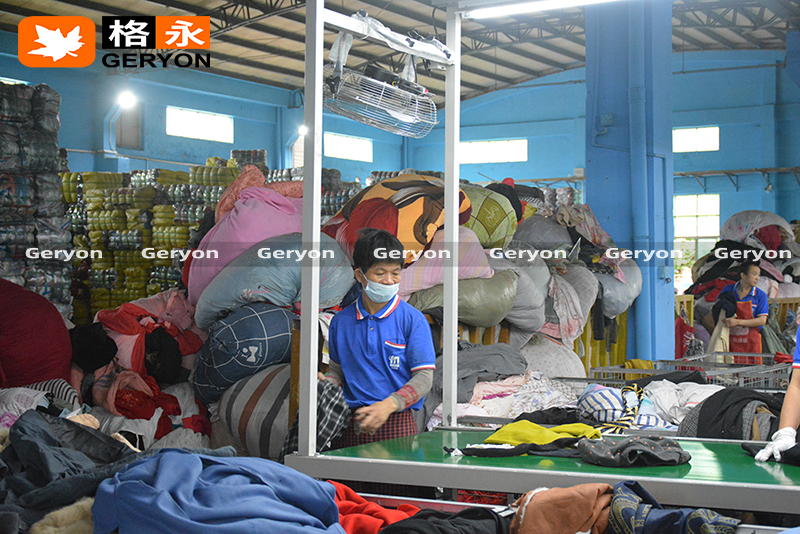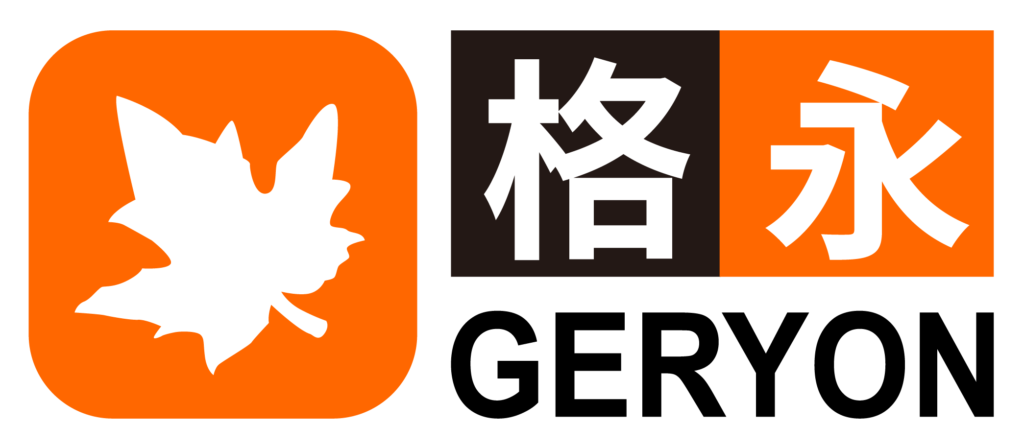The demand for United States used clothes is not just a passing trend—it’s a rapidly growing market that presents numerous opportunities for B2B importers. With an increasing focus on sustainability and eco-conscious fashion, many international businesses are looking to source high-quality second-hand apparel from the U.S. In this article, we’ll explore the reasons behind the growth of this market, discuss the best strategies for importing United States used clothes, and highlight why B2B importers should consider expanding their product offerings to include American second-hand fashion.

1. Introduction: The Rising Demand for United States Used Clothes
The global demand for United States used clothes has seen a significant rise in recent years. This surge in interest can be attributed to various factors, including the growing awareness of sustainable fashion, the affordability of second-hand apparel, and the quality of used clothing available from the U.S. As the demand for eco-friendly and budget-friendly fashion options grows, B2B importers have increasingly turned their attention to United States used clothes as a profitable source. This article will explore the key drivers behind this trend and the opportunities it presents for businesses in the import sector.
Overview of the Growing Market
The market for United States used clothes has expanded rapidly, especially in developing countries where affordable clothing options are in high demand. The U.S. has become a central hub for high-quality second-hand clothing, with numerous suppliers and exporters catering to international markets. As more consumers and businesses adopt sustainable practices, the demand for used clothing continues to grow, making it a key area of focus for B2B importers. By understanding the factors contributing to this market’s expansion, businesses can strategically tap into this evolving industry.
Why United States Used Clothes are Sought After
United States used clothes are highly sought after due to their quality and variety. Many U.S. consumers donate clothing in excellent condition, making it a valuable resource for international buyers. Additionally, American fashion trends influence global markets, making U.S. second-hand apparel a desirable commodity. For B2B importers, the ability to source high-quality clothing from the United States offers a significant competitive edge in the international used clothing market.
2. Why United States Used Clothes Are in High Demand
The growing demand for United States used clothes can be linked to several key factors that have shaped the global market for second-hand apparel. Sustainability, affordability, and the quality of used clothing are just some of the reasons why businesses around the world are increasingly importing United States used clothes.
Sustainability and Eco-Conscious Fashion Trends
Sustainability is a major driving force behind the demand for United States used clothes. As consumers become more environmentally conscious, they are turning to second-hand clothing as a more sustainable option. By importing United States used clothes, B2B importers can offer their customers eco-friendly alternatives to fast fashion, catering to the rising demand for sustainable products. This trend not only helps reduce textile waste but also offers businesses a chance to tap into a growing market of environmentally-aware consumers.
Quality and Variety of U.S. Second-Hand Apparel
One of the main reasons United States used clothes are in high demand is the exceptional quality and variety available. The U.S. has a robust second-hand clothing market, with a wide range of styles, sizes, and brands. B2B importers can source premium used clothing, from high-end designer pieces to everyday casual wear, ensuring they can meet the diverse needs of their international customers. The diversity and quality of United States used clothes provide importers with valuable inventory that appeals to a broad audience.
Consumer Preferences and Global Buying Patterns
Consumer preferences have also shifted toward second-hand fashion as the global market for used clothes grows. With online platforms and social media promoting sustainable lifestyles, more people are choosing pre-owned clothing for its affordability and uniqueness. This shift in consumer behavior has opened up significant opportunities for B2B importers to source United States used clothes and meet the demand for eco-conscious fashion across the globe.
3. The Benefits of Importing United States Used Clothes for B2B Businesses
Importing United States used clothes offers numerous benefits for B2B businesses. These benefits range from access to a competitive inventory of high-quality used apparel to the potential for significant profit margins in a growing market. B2B importers can maximize their return on investment by tapping into the vast and diverse supply of second-hand clothes from the U.S.
Competitive Pricing and Profit Margins
United States used clothes are often available at competitive prices, making them an attractive option for B2B importers looking to achieve high profit margins. By sourcing second-hand apparel from the U.S., businesses can offer their customers affordable clothing while still maintaining a healthy markup. The price advantage of used clothing, compared to new items, is especially appealing in markets where consumers are price-sensitive but still demand quality.
Access to Premium, Diverse Inventory
The U.S. market for used clothes is extensive, offering a wide range of inventory from top brands, seasonal items, and unique fashion pieces. B2B importers benefit from the diversity of U.S. used clothing, enabling them to cater to different customer preferences and regional trends. Whether it’s vintage clothing, high-end brands, or popular casual wear, United States used clothes provide a broad selection of products that are in demand across international markets.
Lower Environmental Impact
By sourcing United States used clothes, B2B importers can contribute to reducing the environmental impact of the fashion industry. The reuse of textiles through the importation of second-hand apparel helps lower the carbon footprint associated with the production of new garments. Businesses that prioritize sustainability by offering United States used clothes can also enhance their brand image and attract customers who value environmentally responsible practices.
4. How to Import United States Used Clothes: A Step-by-Step Guide
Importing United States used clothes involves several key steps that B2B businesses must understand to successfully navigate the process. From sourcing suppliers to managing logistics, this section provides a comprehensive guide on how to import U.S. second-hand clothing efficiently and cost-effectively.
Finding Reliable U.S. Suppliers
The first step in importing United States used clothes is finding reputable suppliers. There are many wholesalers, distributors, and liquidation companies that specialize in second-hand clothing exports. B2B importers should focus on establishing relationships with suppliers who can consistently provide high-quality used clothes and offer competitive pricing. Conducting thorough research and vetting potential suppliers is crucial to ensure a smooth import process.
Understanding Import Regulations and Duties
Each country has specific regulations and duties for importing used clothing. B2B importers must familiarize themselves with the rules governing the import of United States used clothes to avoid delays and unexpected costs. This includes understanding customs requirements, import taxes, and any certifications needed for used textiles. Compliance with local regulations will help businesses avoid legal issues and ensure the timely delivery of goods.
Shipping and Logistics Considerations
Once suppliers are identified and import regulations are understood, businesses must focus on the logistics of importing United States used clothes. This involves selecting a reliable shipping company, understanding shipping costs, and planning for any potential delays. Importers should also consider the most efficient ways to store and distribute the goods once they arrive in their destination markets.
5. Key Trends Shaping the United States Used Clothes Market
The market for United States used clothes is shaped by several key trends that impact both suppliers and importers. Staying ahead of these trends is essential for businesses to remain competitive in this growing industry.
The Role of Online Marketplaces
Online marketplaces have played a significant role in the growth of the United States used clothes market. Platforms such as eBay, Poshmark, and ThredUp have made it easier for individuals and businesses to buy and sell second-hand clothing. B2B importers can take advantage of these platforms to connect with U.S. suppliers, track trends, and stay informed about popular products. As e-commerce continues to expand, online marketplaces will remain a key tool for sourcing United States used clothes.
Impact of Social Media on Consumer Behavior
Social media has had a profound impact on consumer behavior, particularly in the fashion industry. Platforms like Instagram and TikTok have popularized sustainable fashion trends, influencing consumers to choose second-hand clothing. B2B importers can use social media to gauge consumer preferences and target their marketing efforts to meet the growing demand for United States used clothes.
Innovations in Recycling and Sorting Technology
Innovations in textile recycling and sorting technology are improving the efficiency and quality of used clothing exports from the U.S. Automated systems that sort and grade second-hand apparel are making it easier for suppliers to provide high-quality, well-curated lots of used clothing. These advancements are helping the United States used clothes market meet the demands of international B2B importers more effectively.
6. Challenges B2B Importers Face and How to Overcome Them
While the market for United States used clothes offers many opportunities, it also comes with challenges that B2B importers must address to be successful.
Dealing with Quality Control and Sorting Issues
One of the main challenges faced by B2B importers of United States used clothes is quality control. Not all second-hand clothing is in pristine condition, and sorting can be time-consuming. To mitigate this issue, businesses should work with suppliers who use advanced sorting techniques to ensure the quality of the products they receive. Establishing clear quality standards with suppliers can also help minimize the risk of receiving subpar items.
Managing Inventory and Storage
Managing inventory and storage can be a challenge when dealing with large volumes of United States used clothes. Importers must ensure they have the necessary warehouse space and systems in place to handle incoming shipments and organize their stock. Efficient inventory management can help businesses avoid overstocking, which can lead to increased storage costs or excess unsold merchandise.
Navigating Trade Tariffs and Customs
B2B importers must also navigate the complexities of trade tariffs and customs regulations when importing United States used clothes. Import duties can vary depending on the destination country, and customs procedures can be time-consuming. Working with experienced customs brokers and staying updated on tariff changes is essential to avoid delays and additional costs.







